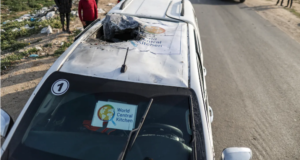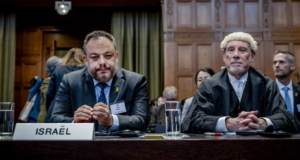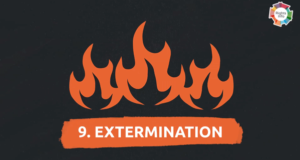“Everybody hopes to have a good life and a future. We love our children, mothers, and fathers, we love our families, like you. And we feel sad when somebody is killed. We are humans of flesh and blood. Think of that for a minute please,” says Fida Qishta a journalist and resident of Rafah, Gaza Strip.
The military withdrew from Rafah early yesterday morning, and returned yesterday night. They are now present at the airport and the outskirts of Rafah. The destruction that they have left behind since last Thursday, August 3rd, consists of 13 killed, including three children one of which was a three-day-old infant. Over 200 dunams of agricultural land, mostly olive and palm trees, have been completely destroyed.
Fida reported that at least 5 buildings are completely annihilated. It is still dangerous to go to areas which have been destroyed to assess the exact damage. Even before this incursion, residents of Rafah have had only 2 hours of water every four days and electricity for one hour each day.
“Never rely just on information from the stronger side,” Fida implores, “Hearts can tell what information is accurate and guide people to the truth. Truth can tell us how to reach justice and peace.”
An additional consequence of Israel beginning its “Operation Summer Rain” in Gaza, was the closure of Rafah Crossing on June 25th, 2006. This has resulted in a catastrophic humanitarian situation for thousands of Palestinians stuck on the Egyptian side of the border crossing and hundreds of travelers stuck inside. The Palestinian Center for Human Rights reports that because of the closure five patients, including 2 women and 3 children, died due to the deterioration of their health, the inability to return to the Gaza Strip, and the inability to refer them for treatment abroad.
The Center also noted in a press release from August 3rd that nearly 7,000 Palestinian travelers are forced to stay in Egypt, including 400 in the exit terminal at the Egyptian side of the Rafah Crossing. 500 Palestinians returned to the Gaza Strip in exceptional circumstances when the border fence was breached by resistance forces on 14 July 2006. And nearly 6,000 travelers returned to the Strip on 18 July 2006 when Israel allowed the temporary opening of the Rafah Crossing for returnees only.
Nearly 15,000 Palestinians are now waiting for the reopening of the Crossing, including hundreds of families who live abroad and are in the Strip for family visits. They face the threat of losing their residency visas in the countries where they work and live. In addition, hundreds of patients are awaiting the reopening of the Rafah Crossing in order to travel for treatment in Egyptian hospitals for ailments and conditions that cannot be treated in the Gaza Strip. Hundreds of students are waiting for the reopening of the Rafah Crossing in order to resume their studies abroad. And hundreds of recent secondary school graduates who want to pursue university studies abroad are also waiting for the reopening of the Rafah Crossing. The work of governmental and civil society organizations was affected by the closure, especially the areas that require external travel and co-ordination.
Thousands of Gaza Strip residents who traveled abroad before the closure are forced to wait for the opening of the crossing in other countries, especially Egypt.
 International Solidarity Movement Nonviolence. Justice. Freedom.
International Solidarity Movement Nonviolence. Justice. Freedom.


